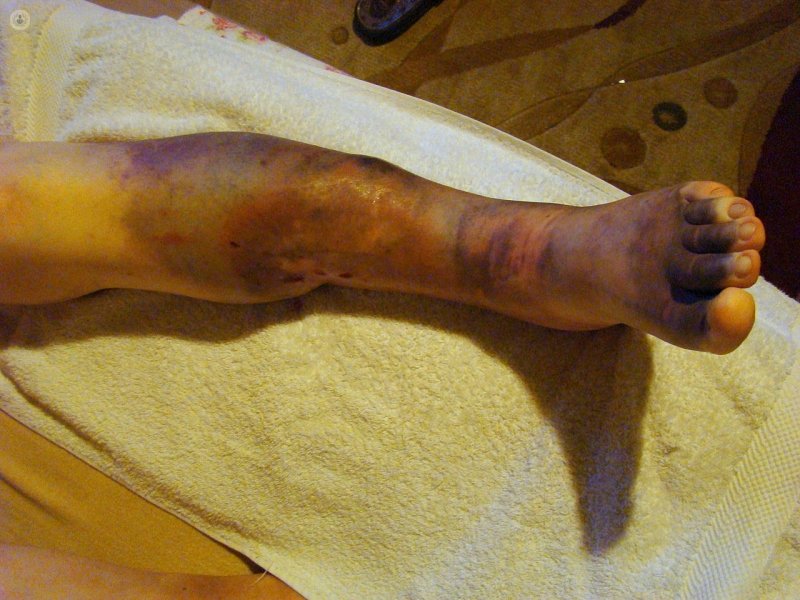


What is post-thrombotic syndrome?
Post-thrombotic syndrome (PTS) is a complication of chronic (long-term) deep vein thrombosis (DVT). DVT is a blood clot in a deep vein, most commonly in the leg. A blood clot in a leg vein can cause inflammation, and can damage the valves in the blood vessels which prevent blood from flowing backwards. This leads to a number of uncomfortable symptoms. It can occur as a complication of May-Thurner syndrome.
What are the symptoms of post-thrombotic syndrome?
There are several key symptoms of post-thrombotic syndrome, all of which can cause discomfort and make life more difficult for the patient:
What causes post-thrombotic syndrome?
Deep vein thrombosis, i.e. a blood clot in the limb is the root cause. Normally, veins have tiny valves, which open as the heart pumps blood forwards, but then close between heartbeats to prevent backflow of blood. Blood clots around these valves damage them, and they can become leaky, allowing blood to pool in the extremities, usually around the ankle.
If the clot also blocks blood flow, the leg can become painful, red, and swollen. As post-thrombotic syndrome worsens, so do the symptoms, and leg ulcers can develop.
How can it be prevented?
The best way to prevent post-thrombotic syndrome is to prevent the initial blood clot. Patients who have had recent surgery, or are bed-ridden, for example, have a higher chance of developing deep vein thrombosis. Compression boots, stockings, or medicine may be given to such patients, depending on the case. If you are concerned that you may be at risk of clots, ask the doctor treating you.
What is the treatment?
Elastic compression stockings can also help treat the symptoms – they can prevent blood pooling in patients who already have a blood clot. The pressure from these tight stockings aids the vein in pumping blood back up the leg. Other devices may be recommended for the same purpose. As always, the doctor treating the patient will recommend the best course of action.
If leg ulcers develop, the patient may also need wound care and prescription medication to counter this symptom of PTS.
